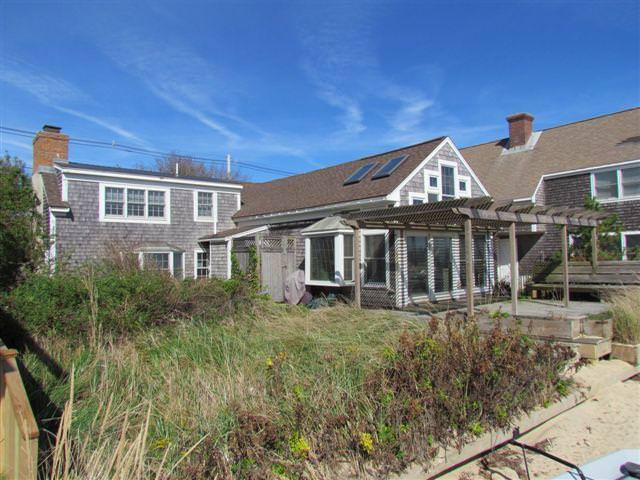The post below is from Dan Stone and his blog The Mortgage Report Daily. He is based in Madison Wisconsin. It also provides a good top level review of mortgages for condos. In our local markets its all about condos so it is interesting to see his mid western viewpoint..i.e. “Getting a mortgage for a condo can sometimes be a challenge”. Regardless it is a good and informative post. Sometimes we need to see what the middle of the country is thinking and doing.
Case-Shiller Index : U.S. Condos Increasing In Value Faster Than Comparable Single-Family Homes
August 9, 2013.

As the U.S. housing market gains, it’s taking the condominium market with it.
Home price growth in condos and co-ops is outpacing growth in single-family residences. This is a major shift for the housing market — condos were among the most distressed sectors of last decade’s housing market downturn.
Home sellers are getting higher prices for their condos.
Los Angeles Condos Jump 23%; Chicago Rises 12%
According to the most recent Case-Shiller Index, home values climbed 12.2 percent nationwide for the 12 months ending May 2013. This jump marks the biggest one-year increase in home valuation since the Case-Shiller Index launched 26 years ago.
Each of the Case-Shiller Index’s 20 tracked cities posted annual gains, led by the San Francisco Bay Area; Las Vegas, Nevada; and Phoenix, Arizona. Home valuations in the Las Vegas are up 23% since from 12 months ago, which claws back against the heavy losses sustained last decade.
The “last place” finisher in the May 2013 Case-Shiller Index? New York City.
As compared to one year ago, home values in the city’s five boroughs — Manhattan, Brooklyn, Queens, the Bronx, and Staten Island — rose just 3.3 percent, which is well below the U.S. national average.
However, the Case-Shiller headline figure tells just part of the story.
In New York City, the market is thick with condominiums and co-ops and it just so happens that the Case-Shiller Index ignores homes of these types. If we were to add back condos and co-ops to the Case-Shiller Index data, we’d actually see that New York City is performing quite well.
In New York, condo values are up nearly 10% since last year — well above the broader index’s reading of 3.3 percent.
The same is true in other Case-Shiller Index markets, too. Condos in the 4 other cities tracked by the Case-Shiller Condominium Index showed strong annual gains, and each outpaced its home city.
- Los Angeles, California : Condos +23.1% annually (versus +19.2% for single-family homes)
- San Francisco, California : Condos + 27.6% annually (versus +24.5% for single-family homes)
- Chicago, Illinois : Condos + 11.9% annually (versus +8.5% for single-family homes)
- Boston, Massachusetts : Condos +8.7% annually (versus +7.5% for single-family homes)
- New York City, New York : Condos + 9.8% annually (versus +3.3% for single-family homes)
With tight supply and limited construction, buyers of condos and co-ops should expect higher home prices through the end of 2013 and into early-2014, at least.
Mortgages For Condominiums
Getting a mortgage for a condo can sometimes be a challenge. Last decade, lenders were burned on condos for a variety of reasons and so they’ve bounced back on condo loans a bit more cautious and a bit more wise.
Today’s buyers of condos have fewer financing choices as compared to buyers of single-family detached homes.
As one example, buyers using conventional mortgage financing via Fannie Mae or Freddie Mac pay a premium for all loans with less than 25% equity. For this reason, buyers of condos and co-ops are encouraged to cap loans at 75% loan-to-value (LTV).
Condo loans above 75% LTV remain acceptable and approvable, however, the accompanying mortgage rate and/or closing costs will likely be higher.
VA loans for condos are available, too. VA loans allow 100% financing with no mortgage insurance required. Mortgage rates tend to be relatively low with a VA loan because all VA loans are guaranteed by the government.
In nearly all cases, though, buyers of condominiums will want to verify a building’s warrantability.
“Warrantability” is a mortgage term whether mortgages in a given condo building are eligible for purchase by Fannie Mae or Freddie Mac. Non-warrantable condos are sometimes denied for funding, but not always.
A building’s warrantability is based on a host of traits, some of which include :
- No person owns more than 10% of the building units
- No more than 50% of the building’s units are active rental units
- No more than 20% of the building is dedicated to commercial/retail space
To determine whether a building is warrantable or non-warrantable, mortgage lenders will often use a “condominium questionnaire”, which addresses the lendability of a building.
Non-warrantable condos can still be financed, it should be mentioned. Product availability, however, is limited and mortgage rates are sometimes higher.
The Case-Shiller Index reports rising values for today’s condos and co-ops. In many cases, condo prices have climbed more than for comparable single-family residences. Buyers of condos should expect rising prices.








